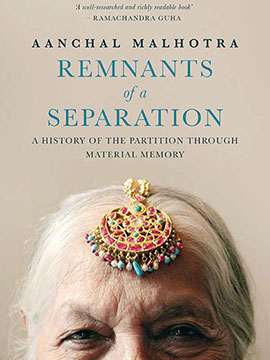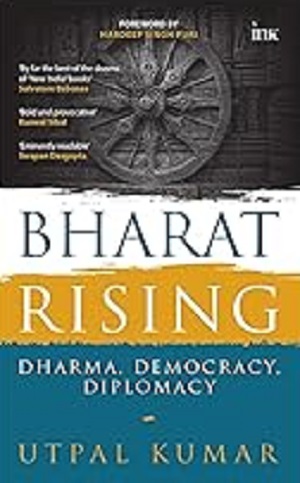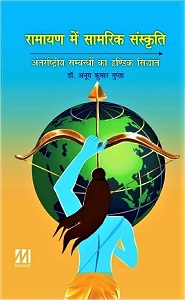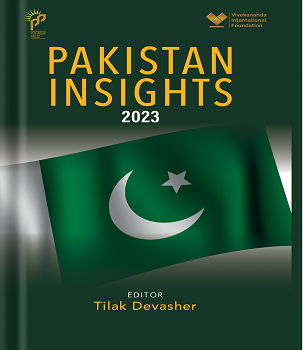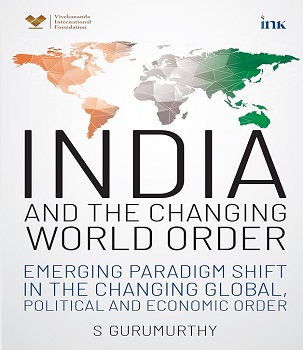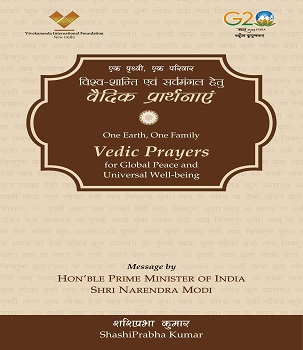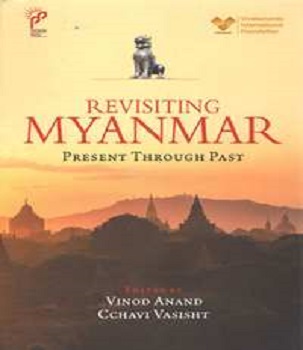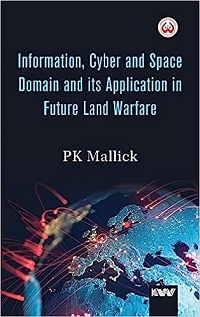It was Elie Wiesel who had said, “Without memory, there is no culture. Without memory, there would be no civilisation, no society, no future.” The Holocaust survivor would know, as would those in India and Pakistan who went through the trauma of Partition (yes, with a capital ‘P’, because this partition was more than a division of geographical boundaries - it was an event that uprooted families from not just their homes and hearths but cultural moorings as well). It is fine today to talk of Partition as something that had to happen given the social and political conditions of that time. The generation of now is even less inclined to view it with any romanticism given the passage of time and its own sense of priorities. Indeed, it considers the development with a detachment that comes from either lack of sensitivity or simply disregard for history. To own up is to first acknowledge, and to acknowledge is to first feel. It may be that we feel more for our smartphone than for a course of history which affected us — and continues to affect us regardless of whether we understand it or ignore it.
And so it comes a pleasant surprise that a member of this youthful generation, educated abroad with apparently little reason to hark back on this tragic event of monumental proportion, should write on Partition. Even more pleasantly surprising is the theme the author from this youth brigade, Aanchal Malhotra, has chosen: Using the prism of ‘material memory’ to relive those days of sorrow, but also of happy moments that preceded the fateful development. Materials that may be biologically dead but are throbbing with life because memories are attached to them. A piece of stone is as dead as dead can be, but if it offers an important link to the evolution of earth, it suddenly springs to life. Or if it is seen as a Shiv Linga, for instance, the stone becomes the embodiment of a religious-spiritual cultural ethos.
The literary world in both India and Pakistan is replete with Partition stories — though modern-day narratives have more to do with terrorism and the like. Historical accounts have been written of the barbarity of mankind during those terrible months and the political battles that were fought which left an undivided India into two smouldering parts. Fictional accounts with Partition as a background too were penned, providing disturbing images and shaking up readers with the slightest vestige of a conscience. Such was the potency of the fictional narrative of those days (rooted in reality) that those narrations have continued to trouble us to this day — take the writing of Saadat Hassan Manto, for example, and try getting a night’s fitful sleep after reading his stories. But the use of material memory as a craft to recall the days preceding Partition, during Partition and after Partition, has perhaps not been tried before by writers — at least not in the exclusive sense Aanchal Malhotra has done. A seemingly dull-looking utensil, an ordinary enough shawl, an unassuming stone plaque, an old photo album, a common piece of jewellery — all of these and more, passed on through generations and having survived the toughest passage of all, the Partition, have stories to tell. If the authors before used the stench of rotting corpses, the dance of the macabre, the rapes and mutilations, and such other terrible happenings to construct the sense (or senselessness?) of the division, Aanchal Malhotra employs material objects to sort of personify Partition. The book arouses sentimentality of the positive kind through this method.
Thankfully, the author is neither political nor preachy — twins temptations that have often clouded many literary works. Indeed, she makes her intention clear at the very start, when she remarks, “I find myself questioning, as many have since, the nature of the Great Divide. I compare the experiences of those who remained Indian with those who became Pakistani, and by extension the futility or practicality of the event. I weigh the violence, plunder, loot, murder, rape… unity and nationalism, and think to myself: Was it worth it? And though I’m unable to answer this question pragmatically, separating emotion from fact, my mind lingers on the larger question: Could there have been a version of history where we remained an Undivided India, could I have been born in a city that is now ‘sarhad paar’?” But as Aanchal Malhotra will have realised in the course of her project, while it’s no crime to hope for unity and brotherhood, certain things cannot — and many would say should not — be undone. She visited homes in India and in Pakistan, met families on either side with material memories, and left them happier with her intervention — not to mention that in the process she herself must have been enriched by the experience. It helped, of course, that she herself came from a family impacted by the divide and a chance encounter with one such material memory at her maternal grandparents’ house aroused her interest. But how can mere objects evoke deeply-felt passions? Let’s understand with an illustration. When a much loved person passes away, his possessions — clothes, books, or other such materials — are the living memories. We touch them, feel them, and as our fingers lovingly caress those objects, we seem to come closer to that which is not amongst us anymore physically. The material memories of Partition which the author evokes are of a similar kind. And around these substances, the book weaves stories that are a journey into what happened and need not have happened.
Aanchal Malhotra’s quest took her across the country and to our western neighbour. To the house of Narjis Khatun who had lived in Patiala before fate landed her in Lahore following the divide. Her mother had brought along a khaas daan which was passed on to her as part of her bridal dowry. The dome-shaped utensil was her link to India (“I remember everything about Hindustan”). On why she left, Khatun said what many then like her were made to believe: “Beta, leaving was the only way to survive.” At times, the suddenness of a historic event robs it of the gravity that comes to be understood from a distant time. The once-Patiala-now-Lahore resident says of Partition: “But the strangest thing was that we never realised when it happened, kab ek mulk khatam hua aur doosra shuru…” At her maternal place in Delhi, the author came across material memories in the form of a metallic measuring stick (gaz), a pot (ghara), the maang tika, and others, all from pre-partition times which had survived the mad days. It was when she looked at them and heard her paternal family speak that the potency of material memory dawned on her. Her maternal grandfather’s words encapsulated both pain and happiness: “This (the material) was the legacy…This was what had withstood the time and dark events… This was what had remained despite the separation.”
Every household the author visited had a story to tell, and the stories were all the same in matters of passion, of remembrance, and of hope despite the despair. There was a longing perhaps of the old days, but not for any utopian once-more unified nation. The acceptance of things as they are is evident, as is the ‘they’ and ‘us’ categorisation. Naseer Adhami, once in Hardoi in Uttar Pradesh and now in Pakistan, refuses to blame anyone for Partition. He tells the writer, “Beta, this is reality and I don’t blame anyone.. Jo hai so hai. We had our own aspirations as Muslims, and they had their own.” And so, along with the common sentimentalities that material memories arouse on both sides of the divide, there is the ‘us’ versus ‘they’ game at play. That material memories which cut through social divisions should exist alongside parochial mindsets, may seem baffling. But paradoxes existed during the Partition too. MA Jinnah, a self-declared secularist, founded an Islamic nation and Mahatma Gandhi who was a staunch believer in the Hindu faith, battled to the last breath of life for a secular India. The ‘secular’ military of Pakistan ended up being deeply religionist, more so from the time of Zia-ul-Haq’s leadership. Today, most dispassionate analysts agree that Pakistan for all its religious coherence and unity, is a failing, if not an already failed, state; while India, despite its vast cultural diversity which often results in friction of the most serious kind but has been managed well, is hailed throughout the global community as a success.
But we have ventured into politics, which is an unwelcome digression from the intent and purpose of Aanchal Malhotra’s book. There is enough to read on the politics in and between the two nations, but Remnants of a Separation is arguably the only one of its kind in the non-political sphere. Read it to feel it.

